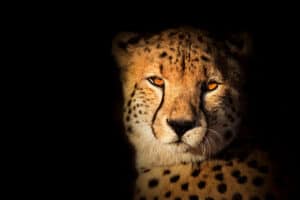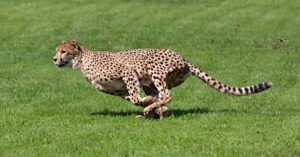You wouldn’t want to run into a cheetah in the wild. Cheetahs are fast animals, natural hunters, and primarily carnivores. They can reach speeds of up to 80 miles per hour, but only in short bursts.
Did you know that cheetahs have to take a 30-minute break after running quickly before they can eat? These big cats are wonderful and have interesting eating habits. Keep on reading to find out what cheetahs eat, how they hunt, and more stunning facts about these large cats!
What do Cheetahs Eat?
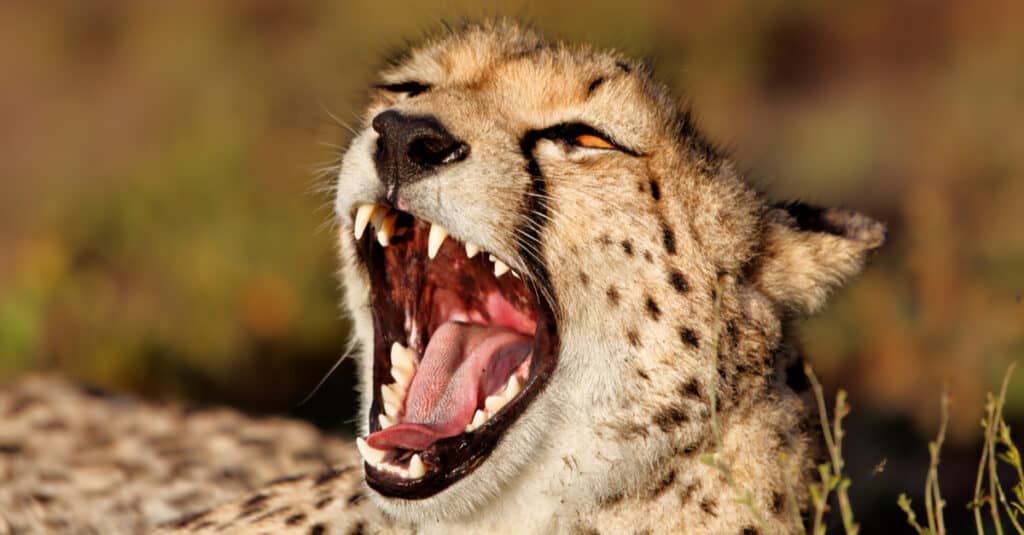
Cheetahs have strong appetites and consume most meaty animals.
©Maggy Meyer/Shutterstock.com
Cheetahs are large cats that have strong appetites and consume most meaty animals. They eat gazelles, impala, and springbok mostly. However, when food supplies are short, they will hunt small animals like birds and rabbits.
Not all cheetahs have the same diet. Asiatic cheetahs, for instance, consume goitered gazelles, wild goats, and chinkara. These cheetahs live in desert regions. The only remaining Asiatic cheetahs live in Iran and have a different food supply. These beautiful cheetahs are apex predators, and yet almost extinct.
Cheetahs primarily hunt for their food. Adult cheetahs spend their time stalking small to medium-sized animals in the wild. As long as the animal has meat and is smaller than the cheetah, it will attack.
What do Baby Cheetahs Eat?
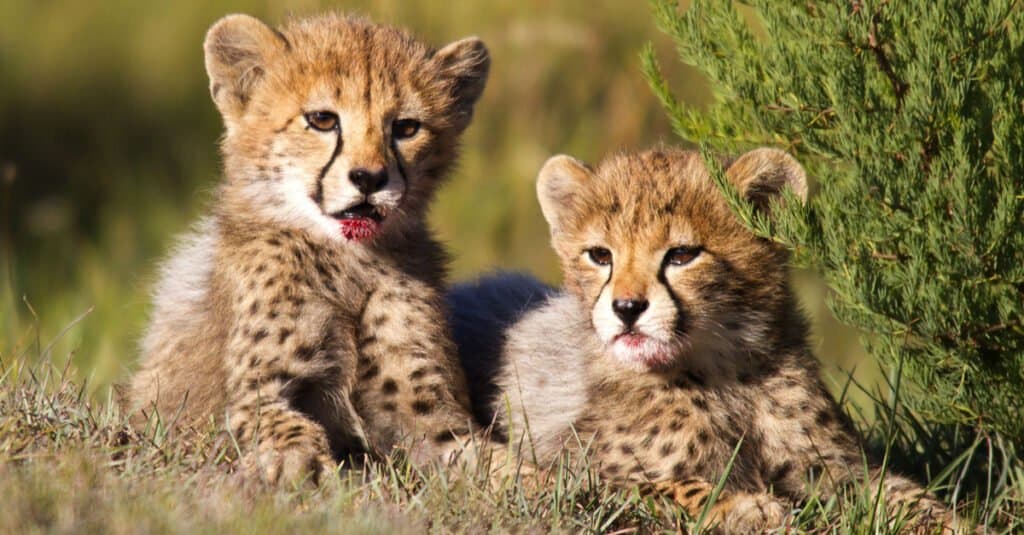
Baby cheetahs start eating meat at three months old.
©Francois van Heerden/Shutterstock.com
Did you know baby cheetahs have different diets compared to adult cheetahs? Cheetah cubs are sweet and have a strong relationship with their mothers. Truly, baby cheetahs for the first few months of their lives eat whatever the mother cheetah provides.
These cubs are extremely vulnerable and are born blind, completely depending on their mother. During the first three months of their lives, baby cheetahs survive only on their mother’s milk. These little cubs eat small pieces of meat as young as three months old.
Mother cheetahs waste no time and begin teaching their cheetah cubs how to hunt by 6 months old.
How Do Cheetahs Hunt for Their Food?

Cheetahs run in short bursts of up to 80 mph when hunting.
©JonathanC Photography/Shutterstock.com
Cheetahs are natural carnivores that hunt for their food. You won’t want to get in the way of their high-speed chases either, as these large cats are heavy and strong. Most cheetahs hunt by stalking their prey. They will get as close as possible and crouch down slowly.
Crouching down slowly helps hide a cheetah’s scent from its prey. Smart and strong, these big cats start high-speed chases in short bursts. Once they catch up to their prey, they strangle its neck.
More times than not, cheetahs do not catch their prey. While these animals are fast, they are known to slip. Unlike other nocturnal cats, cheetahs hunt in the early morning and mid-afternoon.
How Much Food Does a Cheetah Need for One Day?
Unlike humans, cheetahs rarely drink water. The bulk of their diet is protein, specifically meat. Your eyes may widen in surprise knowing that cheetahs only drink water about once every four to ten days.
There is also a huge difference in how much adults, cubs, and female vs male cheetahs eat. For example, lone cheetah adults may hunt every two to five days. Females with cubs kill daily since there are more mouths to feed. Their motherly instincts kick in and they help their cheetah cubs hunt.
How Fast Are Cheetahs?

Cheetahs are fast big cats and can reach 80 mph in short bursts.
©iStock.com/StuPorts
We have all heard the statement that cheetahs are the fastest land animals, but is this true? Cheetahs are fast big cats, but they don’t hit top-running speeds every time they are on the move.
The average speed a cheetah can run without getting tired is 40 mph. When a cheetah is traveling, it will probably run at 40 mph, but cheetahs run quickly in small bursts. When a cheetah runs in a small burst, it reaches 50–80 mph.
Funny enough, sprinting is exhausting. Therefore, cheetahs have to catch their breath for up to thirty minutes after sprinting and before eating a meal.
Other big cats like lions and tigers cannot reach running speeds of 80 mph. With long legs and a slender and lightweight body, cheetahs have a body that perfectly follows the aerodynamics law.
What Animals Prey on Cheetahs?
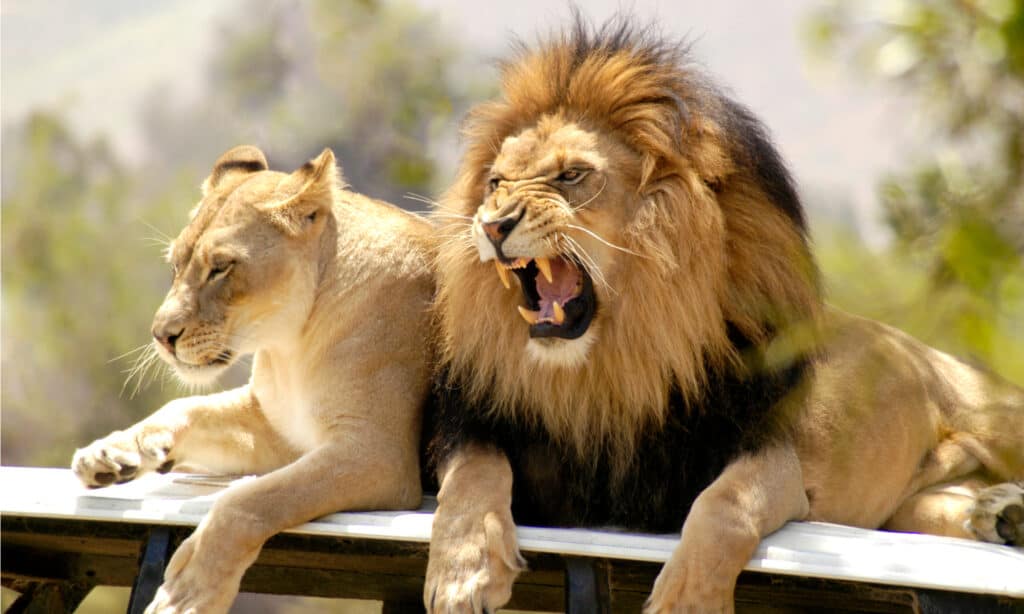
Larger lions and other cats like leopards and hyenas take down baby cheetahs.
©Gunther Allen/Shutterstock.com
It’s hard to wrap around one’s head how cheetahs are predators and prey. Even larger animals can stalk, hunt, and eat cheetahs, but it is rare. Adult cheetahs are too fast to take down; however, less than 15% of cheetah cubs survive till adulthood since many predators hunt these vulnerable cubs.
When the mother leaves her cub to hunt, larger lions and other cats like leopards and hyenas take down baby cheetahs. Baby cheetahs are adorable and have fluffy faces. They are hard to resist but have dangerous predators.
Although crocodiles usually stay away from big cats, some people have witnessed and filmed an angry crocodile surprising a cheetah. This is not common but happens near rivers like the Nile River. All it takes is one unsuspecting drinking cheetah cub.
Fun Facts about Cheetahs
Big cats like cheetahs are fascinating. Listed below are interesting fun facts about cheetahs and their unique lifestyles.
- A Cheetah’s ‘Mask’ or ‘Teardrop Stains’ Protect it From the Sun
The gorgeous tear marks on a cheetah are a lot more than just a cute design. These stains reflect the glare of the sun and make it easier for adult cheetahs to hunt. It is similar to how football players add black marks under their eyes!
- No Two Cheetahs Are Exactly Identical
Maybe you shouldn’t get close enough to count the number of spots on a wild cheetah. But on average, these furry and fast cats have between 2,000 to 3,000 spots, and they are all different shapes and sizes.
- Cheetahs Sound like Domestic Cats and Not Lions
You know the purring and breathy sounds a cat makes? Well, cheetahs make the same sounds. While cheetahs are in the same family as lions, they do not roar.
Bonus: Cheetahs Form Hunting Groups Called Coalitions
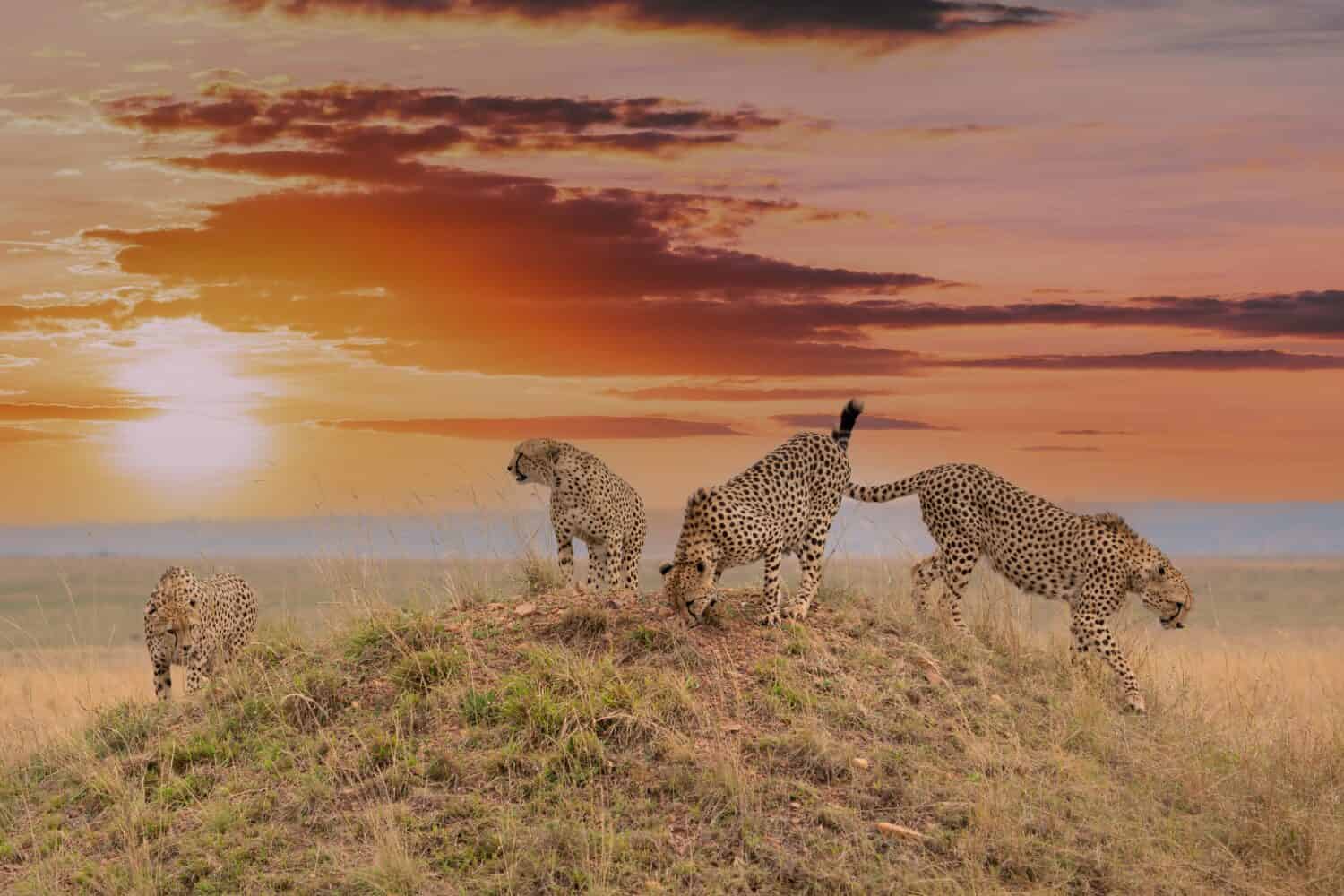
Cheetah coalitions provide protection, companionship, and more efficient hunting.
Image: Tomas Drahos, Shutterstock
©Tomas Drahos/Shutterstock.com
When you think of big cat society – lions and their prides are the first that come to mind. Most cats lead more solitary lives – yet the cheetah also forms groups called coalitions. Cheetah coalitions are groups of two to five cats – usually male – that spend their lives together either temporarily or for the long haul. The coalition – sometimes called a streak – provides the animals with protection, companionship, and more efficient hunting. Living in a group also seems to give them better odds of finding a mate.
Coalitions are frequently composed of brothers from the same litter – but single males can also join up with a group. Females occasionally join coalitions for short periods – so it seems that many cheetahs can find a group if they want to enjoy coalition life. It is estimated that up to 40% of male cheetahs forego the coalition lifestyle to live solitary lives – but most prefer the benefits of living in a protective and affectionate group.
The photo featured at the top of this post is © iStock.com/StuPorts
Thank you for reading! Have some feedback for us? Contact the AZ Animals editorial team.





